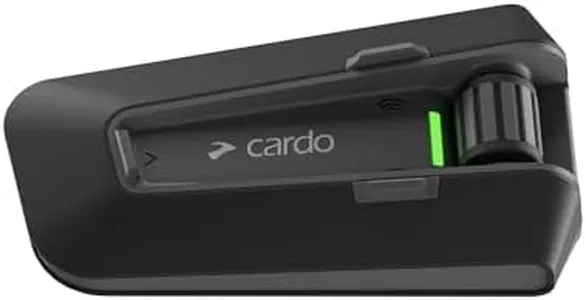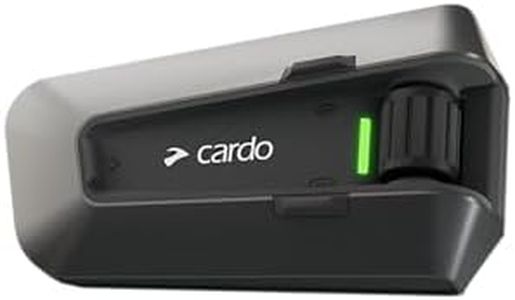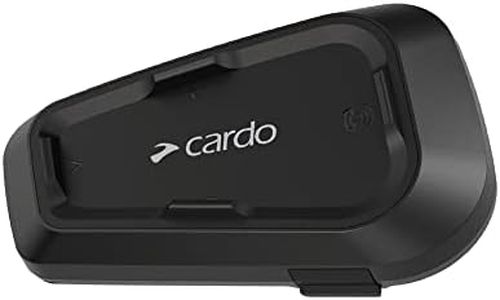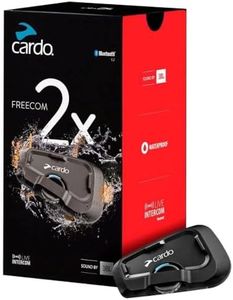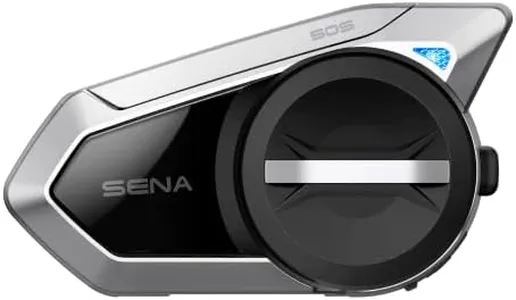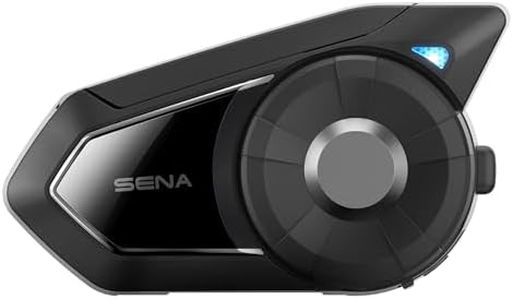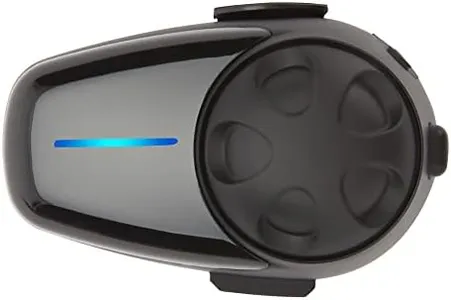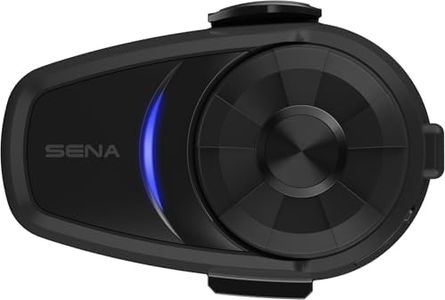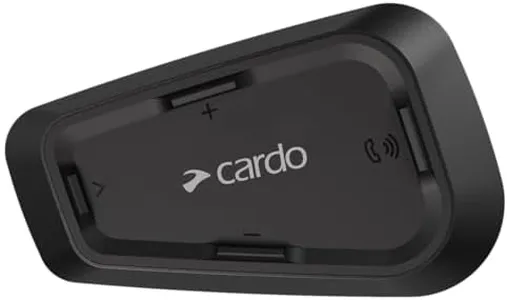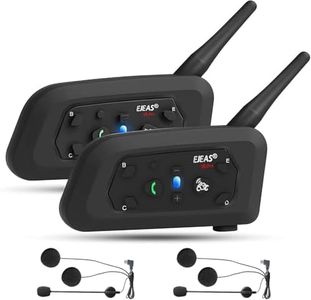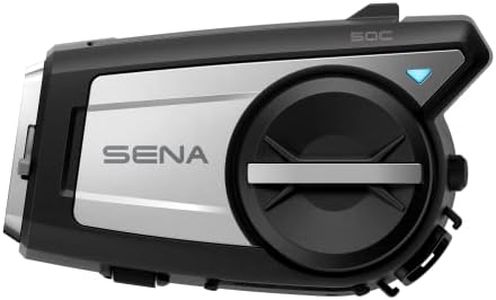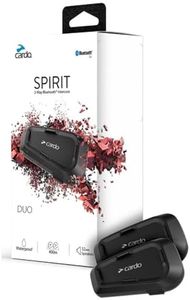We Use CookiesWe use cookies to enhance the security, performance,
functionality and for analytical and promotional activities. By continuing to browse this site you
are agreeing to our privacy policy
10 Best Motorcycle Intercoms
From leading brands and best sellers available on the web.Buying Guide for the Best Motorcycle Intercoms
Selecting a motorcycle intercom is about more than just talking to your passenger or friends on a ride; it’s about staying connected safely and conveniently. The right choice depends on how and where you ride, how many people you want to communicate with, and what extra features you need. Taking time to understand the main specifications will help you confidently pick an intercom that fits your style and ensures a pleasant riding experience.RangeRange refers to how far apart two or more intercoms can be while still communicating clearly. This is important for group rides or when you want to keep in touch with others spread out on the road. Short-range units work for rider-to-passenger communication, medium-range options are good for small groups in close proximity, and long-range models are necessary for larger touring groups or really spread-out riders. Consider how far apart you and your riding buddies usually get, and pick a range that covers your style of riding.
Number of ConnectionsThis specification tells you how many devices or people you can connect to at once. Entry-level intercoms may only support two connections, perfect for solo rides with a passenger, while advanced units can handle larger group chats. If you regularly ride in big packs or want to keep connected with more than one friend, look for a higher number of simultaneous connections to make sure everyone can join the conversation.
Bluetooth CompatibilityBluetooth enables wireless connection between your intercom, phone, GPS, and sometimes even your music player. Some intercoms only support basic Bluetooth calling, while others can stream music or provide GPS directions. Think about what you want to use your intercom for—if you just need calls, basic Bluetooth will do. If you want music and navigation, make sure the intercom supports those features and is compatible with your devices.
Battery LifeBattery life indicates how long the intercom will function on a single charge, which is key for long rides. Units with short battery life are fine for brief commutes, but if you take all-day trips or multi-day tours, look for extended battery specs. Think about your longest typical ride and make sure your intercom can last at least that long, ideally with a bit of reserve.
Mounting and FitMounting refers to how the intercom attaches to your helmet and integrates with your setup. Some systems are universal and fit almost any helmet, while others may be designed for specific helmet shapes or brands. Ease of installation and comfort while riding are crucial. Consider how easily you want to be able to move the unit between helmets or set it up without professional help, and make sure it won't interfere with your helmet’s fit.
Sound Quality and Noise CancellationSound quality and noise cancellation affect how clearly you hear and are heard, especially at higher speeds when wind noise is significant. Basic devices may struggle in noisy environments, while premium versions include features that filter out background sounds. If you spend a lot of time on highways or ride a bike with a loud exhaust, prioritize intercoms with strong sound clarity and effective noise reduction.
Water and Dust ResistanceWater and dust resistance tells you how well the intercom will stand up to bad weather and dusty environments. Riding exposes your gear to the elements, so a low-resistance intercom might be fine for occasional use in nice weather, but regular riders or those in rainy regions will want a more rugged, weatherproof model. Think about the weather and riding conditions you most often encounter to determine the right level of durability.
User Interface and ControlsThe user interface includes the buttons and features you use to control the intercom while riding. Some systems have big, glove-friendly buttons and voice commands to make operation easy, while others use smaller or more complex controls. If you tend to ride with thick gloves or want to adjust settings on the go, make sure the controls are simple, intuitive, and easy to find without looking.
